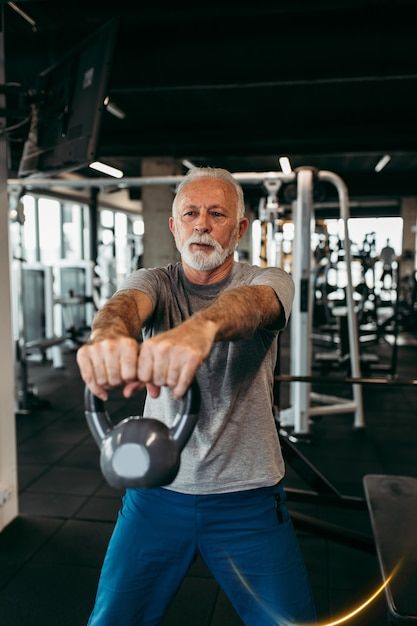![]() Everyone wants to live a longer, healthier life. Most people wouldn’t guess that their hands might hold some interesting clues about their health and even their lifespan. Surprisingly, something as basic as grip strength could be a goldmine for doctors and researchers who want to measure overall health, predict future risks, and spot problems before they show up in bigger ways.
Everyone wants to live a longer, healthier life. Most people wouldn’t guess that their hands might hold some interesting clues about their health and even their lifespan. Surprisingly, something as basic as grip strength could be a goldmine for doctors and researchers who want to measure overall health, predict future risks, and spot problems before they show up in bigger ways.
For many, living longer comes down to eating right, staying active, and visiting the doctor regularly. While all of that matters, your hands—specifically your grip strength—play a huge role in showing how your health changes as you age. Whether you’re opening a jar, lugging groceries, or squeezing a stress ball, the force in your handshake says something meaningful about your health outlook.
This article digs into the details of how grip strength works, why it’s a smart sign to check, and how paying attention to your hands could make a serious difference as you age.
1. Grip Strength: What Is It, and Why Does It Matter?
Grip strength is exactly what it sounds like: it’s the amount of force you can use when squeezing something in your hand, such as a hand dynamometer, tennis ball, or even another person’s hand. For researchers, it’s a super easy test that reveals a lot about your muscle and nerve function.
Why does this specific measure count? Muscles naturally weaken as we age, and grip strength drops right along with them. What makes grip strength stand out is that this simple number often predicts bigger changes in your body before you even notice other problems.
How Grip Strength Connects to Health:
- It reflects your total body muscle strength.
- It shows how well your brain, nerves, and muscles are working as a team.
- Low grip strength is tied to more falls, fractures, and long hospital stays.
- It matters most for older adults, yet keeping tabs on it can help people of all ages.
2. The Science: Grip Strength as a Health Marker
Grip strength has been recommended as a key health marker. There’s strong evidence showing it explains not only overall strength, but also upper limb function, bone mineral density, falls, malnutrition, trouble with thinking, depression, sleep problems, diabetes, multiple chronic illnesses, and quality of life.
Many studies find that folks with a stronger grip live longer and steer clear of major health troubles more often. Weak grip strength has been tied to higher risks of death from any cause and from specific conditions. It also goes hand in hand with future declines in independence, lower bone density, fractures, mental challenges, depression, and more trouble during hospital stays or surgery recovery.
Because of these strong ties between grip strength and overall health, lots of health experts suggest testing it regularly. Even a quick check helps spot older adults who are at risk before more obvious problems—like falls or frailness—appear.

Grip strength is more than just a measure of hand power—it’s a crucial indicator of overall health and longevity. Studies have linked strong grip strength to lower risks of heart disease, improved mobility, and better cognitive function as we age. It reflects muscle endurance, nervous system health, and even resilience against chronic illnesses. Whether through resistance training, grip exercises, or daily functional movements, maintaining a firm grip can help support a healthier, longer life. Think of it as a hidden marker of vitality—one worth strengthening!
3. What Grip Strength Says About Aging
Grip strength regularly pops up in studies on healthy aging. It’s not just about raw muscle; it shows what’s going on all over your body as you get older.
- Weaker grip signals bigger risk for fractures and bone loss.
- Trouble with grip often matches up with slower walking and balance issues.
- Evidence ties low grip strength to sleep trouble, increased depression, and an overall lower quality of life among the elderly.
Researchers notice that certain chronic illnesses, including diabetes and multimorbidity (having more than one long-term condition), are especially tied to weaker grip. That’s why this test is now a staple among epidemiologists and physical therapists. Grip strength extends beyond hand muscles; it’s a real glimpse into a person’s health and independence as they grow older.
4. How to Test and Give a Boost to Your Grip Strength
Testing grip strength isn’t tricky. Hand dynamometers give a reading when you squeeze them, and lots of doctors and therapists use them in regular visits. If you don’t have a special device, try out grip by opening tough jars, carrying groceries, or doing simple dead hangs (hang from a pull-up bar for as long as you comfortably can).
Ways to Step Up Your Grip Strength:
- Use grip trainers or squeeze a tennis ball a few minutes daily.
- Add heavy carries—also called farmer’s walks—to your workouts.
- Try dead hangs or wrist curls using soup cans or light weights.
- Practice daily tasks that require you to use your hands in new ways, like opening jars or doing simple hand exercises.
Just a couple of minutes, a few times each week, can make a real difference in how strong your hands (and the rest of your body) stay as you age.
5. Beyond the Hands: What Doctors Notice from Grip Strength
For healthcare workers, grip strength goes way beyond a basic hand workout. It’s a fast, super useful health screen pointing to bigger risks—even some you might never link to muscle strength.
- Cognitive health: Studies find that less grip strength leads to a higher chance of memory or thinking problems and dementia.
- Mental health: Grip strength lines up with depression risk, especially for older people.
- Nutrition: If you see weak grip, that often means the person might have nutritional gaps or be losing muscle due to health issues.
- Risks in hospital: Doctors may test grip to check who needs extra help bouncing back after surgery or illness.
It’s awesome that this kind of check-up is both simple and quick. There’s no fancy equipment needed; even a regular visit is enough. Being aware of grip strength has real value for preventing bigger troubles and catching problems early on.
6. Clearing Up Myths About Muscle and Aging
I meet lots of people who think muscle loss with aging is set in stone, but that’s just not true. With basic habits, you can keep your muscle power—and your grip—strong well into your later years.
Grip training is just one aspect, but staying active in general, eating enough protein, and keeping your mind and social life sharp all play a role. Experts from physical therapy, geriatric medicine, and nutrition often team up to help older adults stay strong. The great news? You’re never too old to see these benefits.
- Resistance training—weights, bands, or bodyweight—works for all ages.
- Eating good sources of protein makes it easier for your muscles to bounce back and stick around.
- Regular, everyday activities such as gardening or cleaning add up for muscle and grip strength, too.
7. Why Watching Grip Strength Pays Off
Your hands could be sending important signals about your overall health. Grip strength is a quick, straightforward way to check up on your muscles, bones, brain, and general well-being. With research showing grip strength predicts some major health outcomes, it’s smart to think about it as a must-have check in your next doctor’s visit—no matter your age.
No fancy tools are needed to start. Whether you’re keeping tabs on your grip at home or going over it with a healthcare provider, noticing any changes in what your hands can do now could lead to much better health later.
If you take healthy aging seriously, grip strength is a key measurement that helps make sense of how strong and resilient your body is—and lets you know where to focus your next steps. The secret to a longer, healthier life might just be in the strength of your hands.

